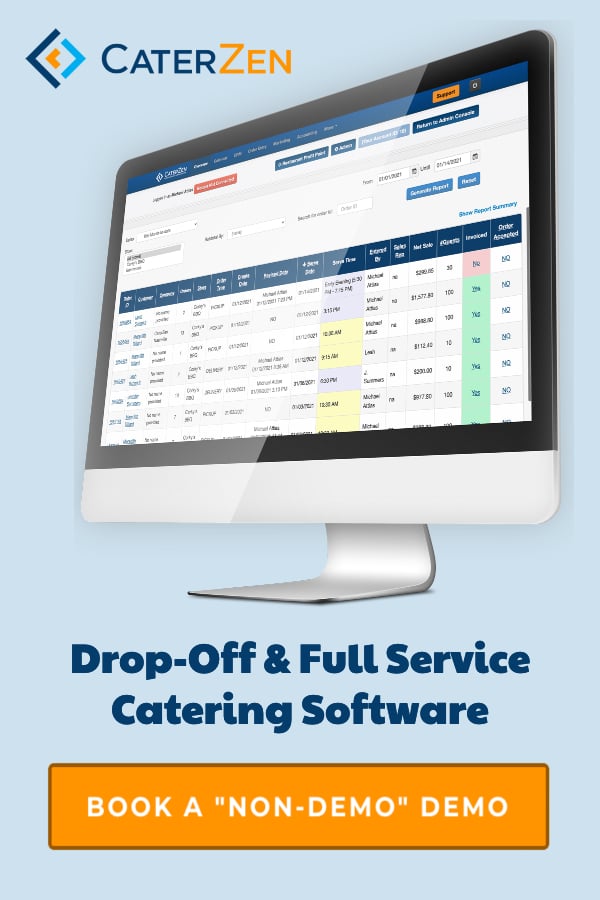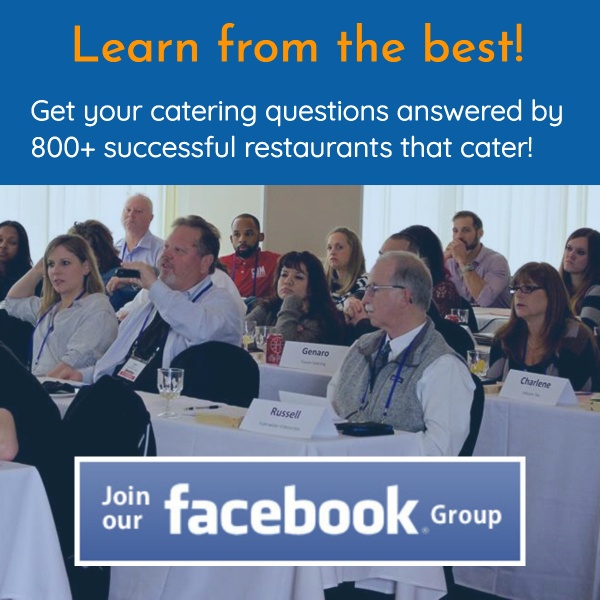Let me level with you: in today’s world, your catering website is just as important as your food. Customers aren’t just walking through your front door - they’re coming through your digital one first. And if that digital door isn’t open wide enough for everyone, you’ve got two big problems:
- You could get sued.
- You’re turning away paying customers.
That’s not scare talk. Restaurant websites, large and small, are receiving ADA web accessibility lawsuits. Costly, stressful, and completely avoidable. About 25% of U.S. adults live with some type of disability. If your website isn’t accessible, you’re not only at legal risk - you’re leaving serious money on the table.
So let’s talk about what accessibility means for your catering website, why it matters, and what you can do about it (without needing a computer science degree).
Why Web Accessibility Matters for Caterers
It’s the Law
The ADA (Americans with Disabilities Act) covers your restaurant or catering business online, not just your physical space. Remember when Domino’s got sued because a visually-impaired customer couldn’t order pizza online? The courts sided with the customer. That case opened the floodgates for lawsuits against restaurants.
It’s Good Business
Imagine you’re a catering buyer, but you can’t read the menu because it’s just a PDF image or the colors are unreadable. Would you stick around? Nope. You’d move on. Surveys show 72% of people with disabilities leave inaccessible sites. That’s a lot of lost catering orders.
It Helps Your Marketing
Google loves accessible sites - real text menus, alt tags, clean headings. That means better search rankings, more traffic, and more orders.
The Standards You Need to Know
Here’s the tricky part: the ADA doesn’t give you a step-by-step checklist.
The most widely accepted benchmark today is WCAG 2.1 Level AA—that’s the Web Content Accessibility Guidelines. Courts and accessibility experts typically hold businesses to this level right now. At the same time, WCAG 2.2 was recently released, and we’re actively monitoring and working toward those standards as part of our continuous accessibility improvements.
What it boils down to:
- Text alternatives for images
- Proper color contrast
- Keyboard navigation
- Clear headings and labels
And here’s the kicker: even if you’re using a third-party system on your site (like CaterZen's online ordering portal), you’re still responsible. If a customer can’t place an order through your site because your vendor’s system isn’t accessible, guess who gets blamed? You.
Practical Steps for Your Catering Website
You don’t need to be a tech wizard to make improvements. Here are the biggies:
-
Use descriptive alt text. Every food photo should have alt text that says what’s on the plate. “Grilled salmon platter with lemon and sides for 10” works a lot better than “image123.jpg.”
-
Skip the PDFs. Customers hate them. Screen readers hate them. Google hates them. Build your menus as web pages. If you want a PDF, fine - offer it as a download in addition to your accessible menu page.
-
Check your colors. Light gray text on white? Forget it. Use a free contrast checker and make sure your text stands out.
-
Test keyboard navigation. Hit Tab on your site. Can you move through every button, form, and menu without getting “stuck”? If not, fix it.
-
Label everything. Every form field should have a label (Name, Email, Event Date). Placeholders don’t cut it.
-
Add captions. If you’ve got a video showing off your catering spreads, add captions. Not just for accessibility - people scrolling on mute will thank you too.
-
Have an accessibility statement. A simple page that says you’re committed to accessibility, the standards you follow, and how people can contact you if they hit a snag. Shows you’re serious.
Pro tip: accessibility isn’t one-and-done. Test regularly. Free tools like WAVE or axe DevTools are great for catching issues before they become expensive problems.
How CaterZen Helps With Accessibility
Here’s where we come in. While we don’t build your entire website, we do provide your online ordering portal - and we’ve worked hard to make it accessible:
- Built to align with WCAG 2.1 AA standards, with ongoing updates as we work toward WCAG 2.2.
- Fully keyboard navigable (you can place an entire order without touching a mouse).
- Support for proper labels, alt text fields, and ARIA attributes so screen readers can interpret the ordering interface correctly.
- High-contrast design—no squinting required.
What does this mean for you? When a customer clicks “Order Online” on your website, they’re stepping into a portal that’s already been optimized for accessibility.
A Quick Note on Your Role
We’ve built our online ordering portal to meet WCAG standards, and we regularly test it with tools like WAVE and axe. But accessibility isn’t just about the software - it’s also about the content you upload.
For example:
Menu item photos: Add clear alt text so screen readers can describe them to visually impaired users. “Pulled Chicken Sandwich & Fries” is a lot more helpful than “sandwich.jpg.”
Colors and contrast: If you create custom graphics (like a “Call Now” button or a banner with your catering hotline), double-check that the text meets the 4.5:1 contrast ratio. Light yellow text on a white background might look “on brand,” but it fails accessibility - and it’ll frustrate customers.
We’ve published a support article with step-by-step instructions on how to add alt text and check contrast in your CaterZen portal. If you haven’t seen it yet, it’s worth a read—it’ll walk you through exactly where to go in your admin settings to keep your site ADA-friendly.
Bottom line: we give you the accessible foundation - but you still need to use it correctly.
Final Thoughts
Accessibility isn’t just about checking a legal box. It’s about hospitality. If you wouldn’t lock the front door of your restaurant to customers in wheelchairs, don’t lock the digital door to customers with disabilities.
Yes, it takes a little work. But the payoff?
- You avoid lawsuits.
- You attract more customers.
- You boost your SEO.
- You show your community that everyone’s welcome.
At CaterZen, we’re committed to staying current with accessibility standards. Our development team regularly reviews our online ordering site, makes adjustments, and keeps testing so it’s usable by everyone. For example, we’ve recently added an accessibility statement directly to the ordering sites - something we already do on our main website - to give customers clarity and confidence.
Accessibility isn’t a finish line. It’s an ongoing journey. But when you invest in it, you’re not just protecting yourself - you’re opening the doors of your catering business wider, welcoming more people in, and living up to what hospitality is all about.
Ready to Take the Next Step?
If you’re looking for an online ordering solution that already has accessibility features baked in, CaterZen is a great choice. We’ve done the heavy lifting on compliance, so you can focus on what you do best - feeding happy customers.
👉 Start your free trial
👉 Or schedule a free training session with our team to see how CaterZen can save you time, grow your sales, and give you peace of mind on accessibility.





